The pathetic history of Dan Hibiki
We chart the evolution of Street Fighter's biggest, pinkest, silliest joke
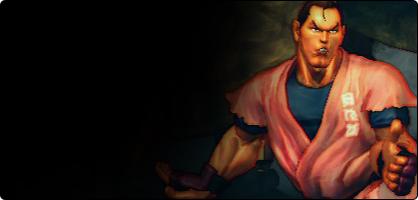
At first glance, Dan is nothing more than a crappy version of Ryu or Ken; kind of like an anti-Akuma. His fists lack any real power, his flashiest move is a super-taunt and nothing, but nothing, is more humiliating than being defeated by one of the piddly little fireballs that whiff out of existence mere inches from his hand.

Above: Do not be like Cyclops. Do not EVER be like Cyclops
The thing is, for all his weaknesses he’s one of the most fun Street Fighter characters to play as. Sure, Ryu or Guile might be able to kick Bison’s ass a lot faster, but Dan’s spirit is unbreakable and his charms are many. His special moves are a blast to play around with, and once you figure out how to make them work for you – instead of just lamenting how they’re not as cool as Ryu or Ken’s – they’re actually pretty effective. Whether it’s an added layer of challenge for experienced players, a way to annoy and humiliate your opponents or just an overtly goofy fighting experience, Dan has a lot to offer. And while it might not seem that way, he’s gone through a lot of changes on the road from Street Fighter Alpha to Street Fighter IV. Let’s look at them now.
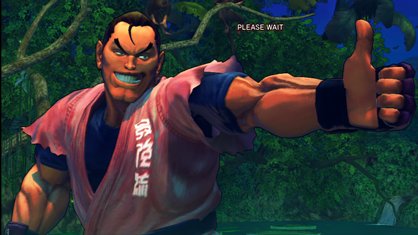
Above: Dan had to wait nearly 14 years before he could be this awesome

Dan didn’t actually appear in Art of Fighting, of course, but SNK’s off-brand Street Fighter clone was the basis for his unique look and demeanor. For some reason, the brains behind Street Fighter seem to have taken more offense from AoF than from any of SNK’s numerous other knock-offs, and zeroed in on its two heroes – gi-clad Ryo Sakazaki and ponytail enthusiast Robert Garcia – in particular.
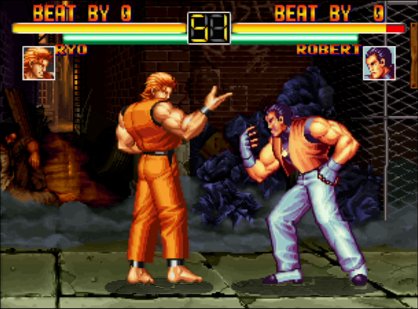
Above: Ryo and Robert set the stage for their bastard offspring
Ryo provided the outfit (later turned a mocking shade of pink) and the moves – the short-range fireball, weak dragon punch and flying flail-kick – while Robert’s douchebag smirk and ponytail were the basis for Dan’s face. Dan’s personality, meanwhile, came from Ryo’s hyperactive little sister Yuri.
Weekly digests, tales from the communities you love, and more
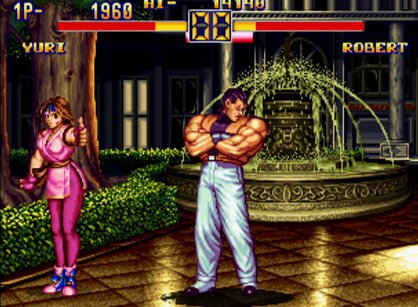
Above: This ought to look familiar
These three were apparently the would-be challengers that made Capcom snap. Before long, a character would be added to the Street Fighter pantheon that basically amounted to Capcom going, “HEY SNK THIS IS YOU DUHHH DUHHH DUHHH.”
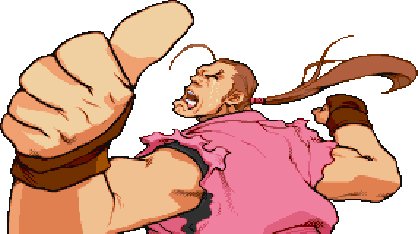
Above: DUHHH

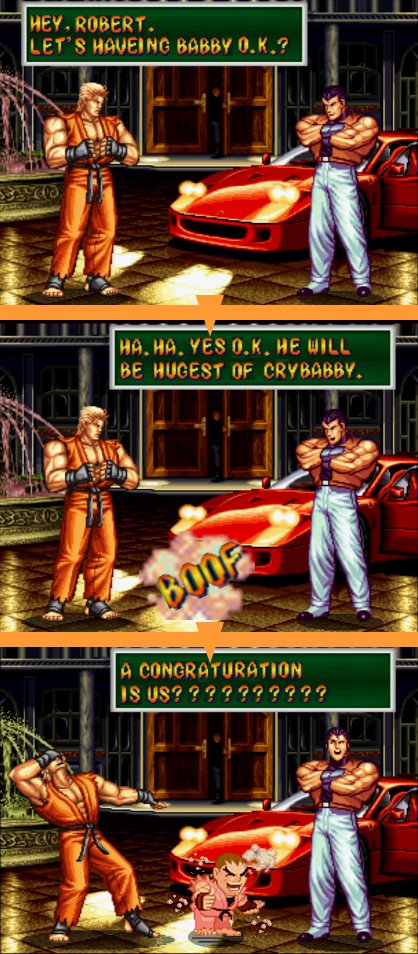
Above: Horrible Engrish courtesy of our vague memories of SNK’s early ‘90s translations

Some of his fans might not realize this, but Dan’s ignominious beginnings predate the Street Fighter Alpha series by at least a year. Sure, his name maybe wasn’t Dan yet, and his gi was orange (much like Ryo’s), but the sad figure whose face Sagat is clenching in this piece of official Street Fighter II art is unmistakably Dan.

Above: Seriously, just look at him.


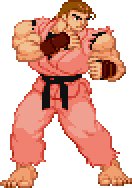
After seeing Dan’s first real appearance, you could be forgiven for thinking he was just another experimental palette-swap of Ryu. Casual players probably wouldn’t even see playing as him as anything other than a chance to play as Sagat’s underpowered punching bag.

Above: Again, the gi might be orange, but that’s clearly Dan
There wasn’t anything to clearly indicate he was supposed to be a joke, apart from maybe the crappy fireball and reliance on taunts. He even had Ryu’s voice, and the ponytail looked a little more like Ken’s than Robert Garcia’s. Not much of Dan’s bizarre personality showed through, either – this Dan was all business.

In terms of his appearance, he looked a little younger and softer than the Dan we’ve come to know, although apart from the lack of bushy eyebrows it’s hard to tell the difference between this and his later incarnations.

Above: First appearance of the Gadouken, aka The Worst Fireball Ever
This was also the beginning of Dan’s story; years earlier, Sagat flew into a rage and murdered Dan’s father after the elder Hibiki blinded him in one eye during a fight. Dan, naturally, wants revenge, although his idea of revenge doesn’t seem to extend beyond defeating Sagat in a fair fight. He wouldn’t achieve that goal in Street Fighter Alpha, but his weird loser’s luck would change dramatically in the sequel.

Above: Bison has a rare talent for understatement

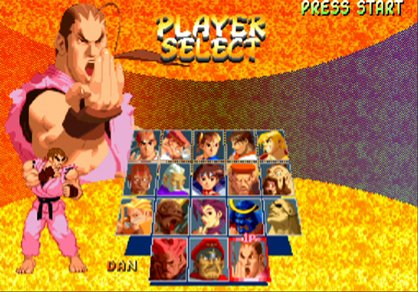

Not only did Dan stop being a secret character in the second Alpha – he was right there in the friggin’ intro, exploding into gamers’ hearts and minds in a way none of the other characters could. This was also where Dan’s appearance came together more cohesively, creating a look that the bushy-eyebrowed, slightly overweight goofball would stick with for a good chunk of his career.
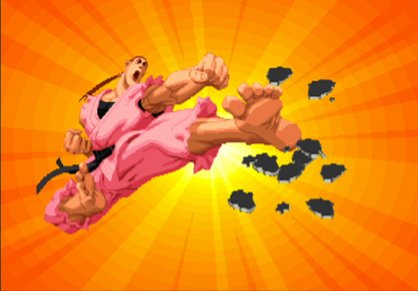
Above: HOW YOU LIKE ME NOW, ASSBUTTS!?
Looks aside, Dan actually got his own voice this time around, enabling fans to hear him screaming, among other things, “OYAJI!” (Japanese for “dad”) for the first time. Alpha 2 was also, to the best of our knowledge, the first time he started using Yuri Sakazaki’s thumbs-up, hips-at-45-degrees “YOYUUSU!” pose as a victory stance.
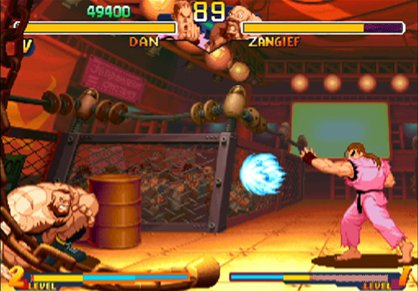
Above: Nope, the Gadouken hasn’t improved any
It was also in Alpha 2 that Dan’s character and narrative really started to take shape. After being denied a canon confrontation with Sagat in Street Fighter Alpha, Dan finally got his wish and faced down the killer who’d presumably ruined his childhood.
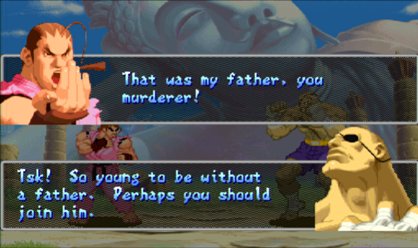

Street Fighter canon states that Sagat, regretful of his actions, threw the fight and let Dan win. That sure seems like the only way a weakling like Dan could overcome a towering hulk like Sagat, but whatever the case he was too overjoyed to notice how hollow his victory was. And rather than simply accepting the fulfillment of his quest, Dan immediately let the victory go to his head.
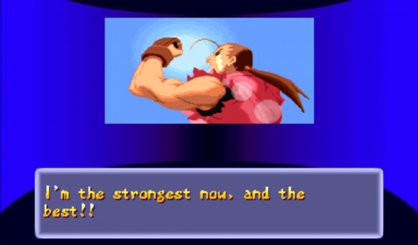
Convinced of his superior talents, Dan founds the Saikyo dojo and begins to teach his own self-taught, mostly worthless martial art to the world. Or, failing that, to any poor sap who’ll sign up. A pink gi is included with membership.
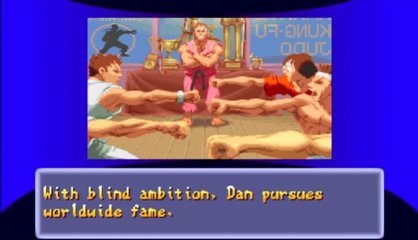
This is only the beginning of Dan’s real history. It’s also where things start to get weird.



